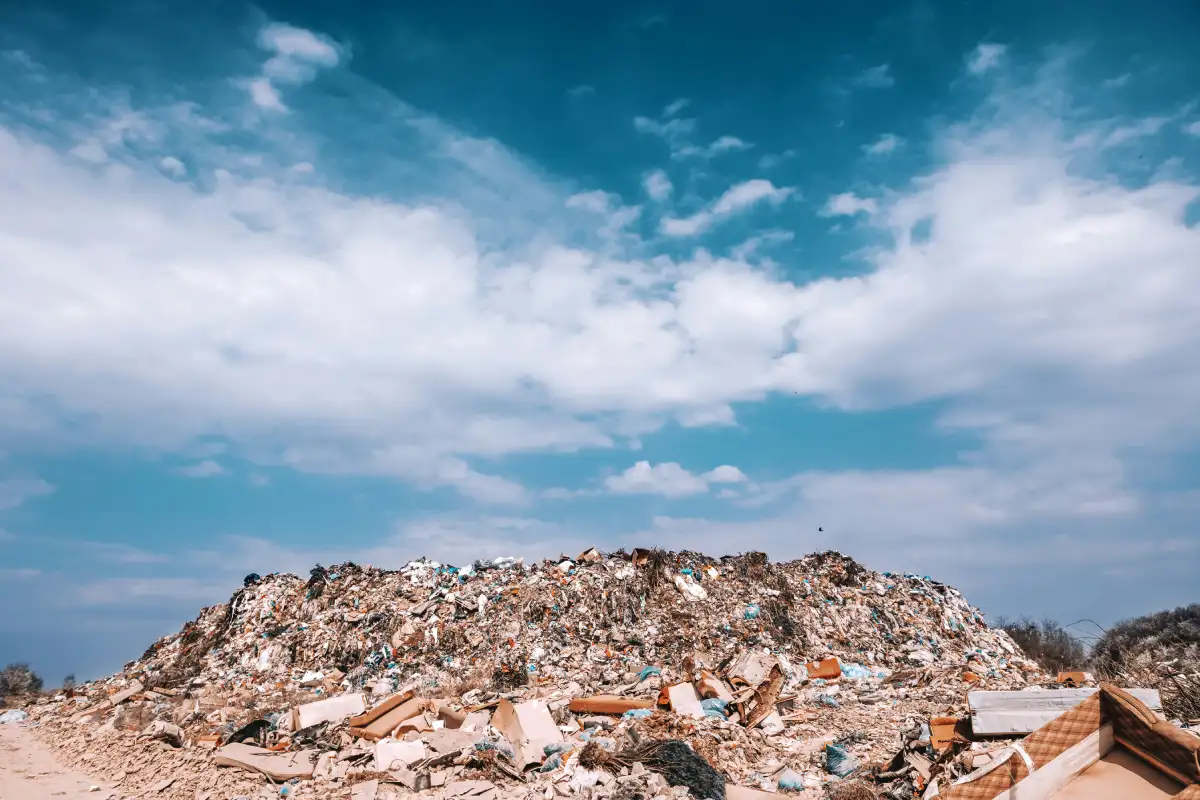Growing Up With Fables, Waking Up to Landfills

“Beta, finish your rice or the Waste Monster will come for you!”
That was my grandfather’s favourite warning when I was a child growing up in 1990s Patna. His stories were vivid and slightly terrifying. Clouds that talked, rivers that laughed, mountains of trash that swallowed towns. At the time, I thought of them as dramatic bedtime tales meant to keep me in check. What I didn’t realise then was that these fables were his way of protecting us from a future he quietly feared.
Years later, I found myself standing in front of the Ghazipur landfill in Delhi. A massive, stinking mountain of garbage, nearly 65 metres tall, loomed ahead of me. It was leaking into the streets and homes nearby, especially during the monsoon, when used syringes and medical sludge washed into the drains. It hit me then, uncomfortably hard. The Waste Monster wasn’t fiction. It was real. And the healthcare system, the very one meant to save us, was one of many things that was feeding it.
India generates more than 62 million tonnes of municipal solid waste every year. Less than 20 percent of this is processed in any scientific way. A growing part of this pile is medical waste plastics, packaging, pharmaceuticals, and all the leftovers of modern medicine. We often celebrate our advances in healthcare, and rightly so, but we don’t talk enough about the hidden cost.
Hospitals, for all their life-saving work, are also some of the most resource-hungry spaces around us. According to the Lancet Countdown, healthcare is responsible for over 4 percent of global greenhouse gas emissions, even more than the aviation sector. In India, many hospitals still depend on diesel generators during power cuts, which adds to the same air pollution that sends people to them with breathing problems.
Then there’s the plastic. Indian hospitals throw out over 1,100 tonnes of plastic waste every single day. Most of this comes from single-use items like syringes, IV tubes, gloves, wrappings, which are essential for infection control, but disastrous once they’re discarded. These lifesaving tools can sit in a landfill for hundreds of years. And then there’s the quieter threat: antibiotic residues in water bodies which are creating superbugs that resist treatment.
In short, we’re treating patients in spaces that are polluting the environment and in the process, making everyone else sicker.
But it wasn’t always this way. I still remember how my grandmother ran her kitchen. There was no such thing as waste. Scraps went into compost, old bottles were washed and reused, and worn-out clothes were stitched into quilts. Circularity wasn’t a fancy word then. It was just common sense. Somewhere along the way, we replaced that wisdom with convenience, and now we’re paying the price.
The good news is that we can return to that sense of balance, even in healthcare. And it’s already happening in some places.
In Tamil Nadu, Aravind Eye Care uses solar-powered operating rooms. Their energy bills dropped by 75 percent, and the savings are used to offer free surgeries to those who can’t afford them. In Chennai, Kalaignar Centenary Super Speciality Hospital has cut its water and electricity bills drastically by using rainwater harvesting and better ventilation systems.
The effort isn’t limited to hospitals. In Dharavi, cooperatives recycle IV bags into plastic furniture. In Kerala, Ayurveda centres compost herbal waste into fertiliser that helps restore overused farmland. In Chhattisgarh, solar microgrids now power rural clinics through blackouts, helping lower maternal mortality. In Vietnam, rice husks are being turned into hospital fuel, cutting emissions by more than a third.
Whenever someone asks if these solutions are too risky or expensive, I think of Aravind again. Their reusable surgical tools have been linked to lower infection rates than single-use ones. But these are still exceptions. To make this the norm, we need bigger shifts. Policy guidelines like Ayushman Bharat and the National Health Mission must include sustainability goals. Medical manufacturers should be held accountable for the plastics they produce through mechanisms like Extended Producer Responsibility. Hospitals can start small with a waste audit here, a carbon report there, and gradually work their way into more circular systems.
As citizens, we need to be part of this shift, too. We can ask questions when we visit clinics. Do they use renewable energy? Do they reprocess their medical waste? Do they publish their environmental data? These may not be questions we’re used to asking, but they matter, and they signal that people care.
Across the world, countries are showing what’s possible. In Sweden, hospitals use AI to sort their waste in real time and power nearby homes with the energy generated. In Canada, hospitals lease and share expensive diagnostic machines rather than buying new ones. In Singapore, hospitals cool their buildings using underground aquifers instead of energy-heavy air conditioning.
India doesn’t just have the scale to make circular healthcare work. We have the creativity, community networks, and ancient wisdom to lead the way if we choose to act with urgency and imagination.
We’re the generation that inherited both the monster and the medicine. Circular healthcare is not some utopian fantasy. It’s a practical path forward, one that can cut costs, improve care, and stop our healing from hurting the planet.
It’s time we rewrite our fables. Not as cautionary tales from the past, but as blueprints for the future.
